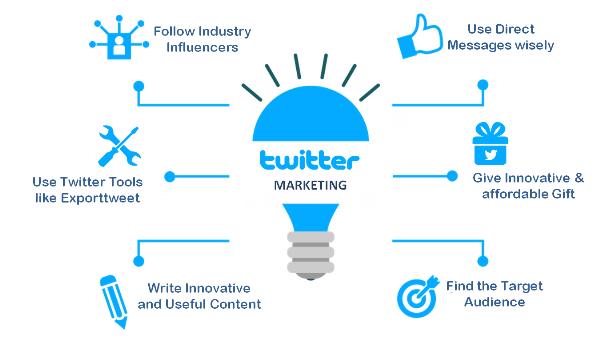How to Handle Identity and Access Management in Multi-Tenant B2B SaaS Apps
Building a multi-tenant SaaS product comes with its share of architectural challenges, but few are as critical—or as tricky—as Identity and Access Management (IAM). When you’re serving multiple businesses on the same platform, it’s not just about letting users log in. It’s about isolating data, managing permissions, and securing user identities across many different tenants, each with their own requirements.
Done right, IAM becomes a pillar of your product’s security and scalability. Done wrong, it’s a recipe for data leaks, broken trust, and lost deals.
In this article, we’ll break down how to approach IAM in a multi-tenant B2B SaaS app, the key components to build (or buy), and how to simplify complex features like SSOJet without sinking weeks of engineering time.
The Challenges of Multi-Tenant IAM
Unlike single-tenant systems, where user roles and access rules are relatively straightforward, multi-tenant SaaS platforms need to account for:
Tenant Isolation: Each company (tenant) should only see their own users, data, and configurations.
Hierarchical Access: Users often need different roles within their organization—admin, manager, contributor, etc.
Custom Identity Providers: Enterprises want to use their own login systems, like Okta or Azure AD.
Lifecycle Management: When a user leaves a company, they must immediately lose access—everywhere.
Delegated Admin: Tenants should manage their own users without impacting others.
IAM quickly becomes more than just "log in" and "log out."
Core Components of IAM in Multi-Tenant SaaS
Let’s break it down into practical components your app needs to handle:
Tenant-Aware User Models
Every user must belong to a tenant, and access controls should reference that relationship. Ideally, user data is scoped at the database level, ensuring hard separation.
Role-Based Access Control (RBAC)
Define roles at the tenant level and assign permissions based on user responsibilities. Think: one admin per company can manage users, but not data from other tenants.
Authentication & Authorization Layers
Use JWTs or session tokens that embed tenant and role info, and validate these on every request. Middleware should enforce access policies on the backend.
Audit Logs
Track actions per tenant and per user. If something goes wrong, audit logs are often the first place security teams look.
Handling Identity Federation with Enterprise Clients
This is where things get messy—and where many B2B SaaS teams get stuck. Larger customers don’t want to create separate passwords for your platform. Instead, they expect SSO (Single Sign-On) support, typically through SAML or OpenID Connect.
Here’s the issue: Every enterprise IdP (identity provider) is a little different. They want custom attribute mappings, different metadata URLs, their own login buttons—and you’ll need to do this for every client.
Enter SSOJet: A Clean Integration Option
If you’re staring down the barrel of building SAML or OIDC support from scratch, consider this your sign to not do that.
SSOJet offers a clean, enterprise-ready way to integrate SSO into your multi-tenant SaaS app without building everything manually. Here's why it works so well in multi-tenant environments:
Tenant-Specific Configs: Each tenant can onboard with their own IdP using a self-serve dashboard or your API.
Protocol Abstraction: SAML? OIDC? Doesn’t matter. SSOJet unifies them behind a single, consistent API.
Hosted Endpoints & Metadata: Skip the certificate rotation and XML headaches.
Secure by Default: All the tricky parts—assertion validation, token verification, etc.—are handled for you.
Instead of managing dozens of SSO connections, you manage one integration with SSOJet. That’s a win for your security posture, engineering team, and client onboarding speed.
Best Practices for Multi-Tenant IAM
To future-proof your architecture and keep your enterprise customers happy, follow these best practices:
Always Scope by Tenant ID
This applies to user sessions, API calls, database queries—everything. Make tenant isolation foolproof.
Enforce Role Checks on Every Action
Don’t rely on frontend logic. Your backend must verify that the user has permission within their tenant to take any action.
Use Claims-Based Auth for Flexibility
JWT claims (like role, tenant_id, permissions) allow your backend to make fast decisions about access and authorization.
Automate Provisioning When Possible
With tools like SCIM or APIs from SSOJet, you can automate user provisioning/deprovisioning as employees join or leave a company.
Keep Security Visible
Enterprise clients want transparency. Document your IAM approach and offer audit logs, permission settings, and session overviews in your UI.
Final Thoughts
IAM in multi-tenant SaaS apps is complex, but mastering it is essential to winning and keeping enterprise clients. You need robust role management, tenant isolation, and flexible authentication flows—including seamless SSO support.
If you’re looking for a clean, scalable way to offer enterprise SSO without reinventing the wheel, SSOJet is the go-to integration option. It lets you handle identity federation confidently while focusing on the core features that make your app stand out.


This comprehensive guide on how to handle identity and access management in multi-tenant B2B SaaS apps offers valuable insights into securing individual user privacy while managing scalable permissions, making it a must read for any developer implementing such systems.
This comprehensive guide effectively illuminates strategies for managing identity and access control in a multi-tenant B2B SaaS environment, ensuring both security & scalability are paramount.
This informative article outlines a comprehensive approach to managing identity and access control in multi-tenant B2B SaaS applications, ensuring both security posture enhancement while maintaining user convenience.
The nuanced discussion on how to expertly navigate identity and access management in multi-tenant B2B SaaS apps presented a comprehensively structured approach, offering actionable insights for enhancing platform security while maintaining user convenience.
Handling identity and access management in multi-tenant B2B SaaS apps effectively is crucial for maintaining security, compliance while fostering seamless user experiences: a nuanced challenge requiring flexible solutions rooted deeply within the platform’s architecture.
This comprehensive guide on how to effectively manage identity and access controls in a multi-tenant B2B SaaS environment provides valuable insights into securing data privacy, maintaining user flexibility while ensuring regulatory compliance.
A comprehensively structured guide that spells out crucial strategies for effectively managing identities and access within multi-tenant B2B SaaS applications, this piece is a goldmine of best practices to ensure seamless security in the most dynamic environments.
The article on how to navigate Identity and Access Management in Multi-Tenant B2B SaaS Apps provides solid strategies for safeguarding data privacy, maintaining individual tenant's compliance while ensuring smooth user experience. A must read!
Invaluable guide for crafting secure and efficient identity access management within multi-tenant B2B SaaS applications, providing practical strategies to safeguard customer data while maintaining a seamless user experience.
This comprehensive guide on how to handle identity and access management in multi-tenant B2B SaaS apps provides practical insights for safeguarding user data privacy, adhering to compliance regulations while ensuring seamless experience across different customer environments.
This insightful article effectively explains the intricate nature of handling identity and access management in multi-tenant B2B SaaS applications through practical strategies, emphasizing how critical data security is intertwined with seamless user experience.
This comprehensive guide outlines practical strategies for effectively managing identity and access in multi-tenant B2B SaaS applications, ensuring both security & user experience.
This in-depth guide on 'How to Handle Identity and Access Management (IAM) for Multi‑Tenant B2B SaaS Apps' illustrates strategies that are both pragmatic as well as future proof, effectively securing sensitive data while仍保持 user convenience.
The comprehensive guidance presented in 'How to Handle Identity and Access Management in Multi-Tenant B2B SaaS Apps' is a must for developers aiming at securing their multiuser, business environments while ensuring seamless user experiences.
This comprehensive guide offers insightful strategies for navigating identity and access management challenges in multi-tenant B2B SaaS applications, ensuring both robust security measures while maintaining user convenience. Well done!














